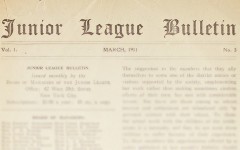Who was Mary Harriman? Part 2.
 When Mary Harriman graduated from Barnard College in 1905 her work with the New York Junior League continued, and in 1909 she founded a sanitarium for Brooklyn’s “consumptives,” an early term for tuberculosis, which often afflicted the poor living in tenement housing. But that same year brought the death of Mary’s father, E. H. Harriman, and she was called on to manage her family’s estate, Arden, near Newburgh, New York. Set on over 40,000 acres, the estate had more than 600 employees.
When Mary Harriman graduated from Barnard College in 1905 her work with the New York Junior League continued, and in 1909 she founded a sanitarium for Brooklyn’s “consumptives,” an early term for tuberculosis, which often afflicted the poor living in tenement housing. But that same year brought the death of Mary’s father, E. H. Harriman, and she was called on to manage her family’s estate, Arden, near Newburgh, New York. Set on over 40,000 acres, the estate had more than 600 employees.
Later, the Harriman family donated 10,000 acres and $1 million to New York State to start Harriman State Park, the second-largest public park in New York State. In 1910, Mary married Charles Cary Rumsey, an American sculptor and polo enthusiast, and scaled back her Junior League work somewhat as the couple welcomed three children over the course of the next seven years: Charles Cary Jr., Mary Averell Harriman, and Bronson Harriman. The Rumseys purchased a home at Sands Point on Long Island (the old-money “East Egg” from The Great Gatsby), and a horse farm near Middleburg, Virginia. They also maintained a penthouse apartment in Manhattan and enjoyed an active social life, making their homes “gathering places for a richly varied collection of social, political, and intellectual friends, from foxhunters and polo players and Junior Leaguers” to poets and writers, such as William Butler Yeats and F. Scott Fitzgerald, according to Rudy Abramson, the biographer of Mary’s famous brother Averell.
But simply living a wealthy lifestyle could not be fulfilling to Mary, and it was during this period that her public service grew. Although The Junior League continued to be her major endeavor, in 1911 she was honored by election to the Barnard Board of Trustees and served in that position until her death. During the First World War, she was active in the Council for National Defense, an organization formed to coordinate resources and industry in support of the war effort, including the coordination of transportation, industrial and farm production, financial support for the war, and public morale. After the war, Mary worked to promote parks and playgrounds in the New York metropolitan area, and advocated for public swimming pools, the use of schools as community centers, and improved housing and transit for poor and working families. In 1918, she joined the board of the Maternity Center Association, a new organization founded to provide post-natal care and instruction for poor women in an effort to reduce the era’s high rate of infant mortality.
It was during this time that Mary worked alongside Frances Perkins, who would later become the first woman named as a cabinet secretary, under President Franklin Roosevelt, and the two deepened a friendship and professional partnership that would continue for the rest of Mary’s life. Four years later, in September 1922, Charles Rumsey was killed in a car accident on his way home to Sands Point. At age 40, Mary found herself a widow with three children. She never remarried, but instead plunged forward into politics and consumer advocacy at the national level. The “quiet” period of her life was over.
*This article was originally published in connected, an official publication of The Association of Junior Leagues International, Inc., and has been reprinted with permission.



